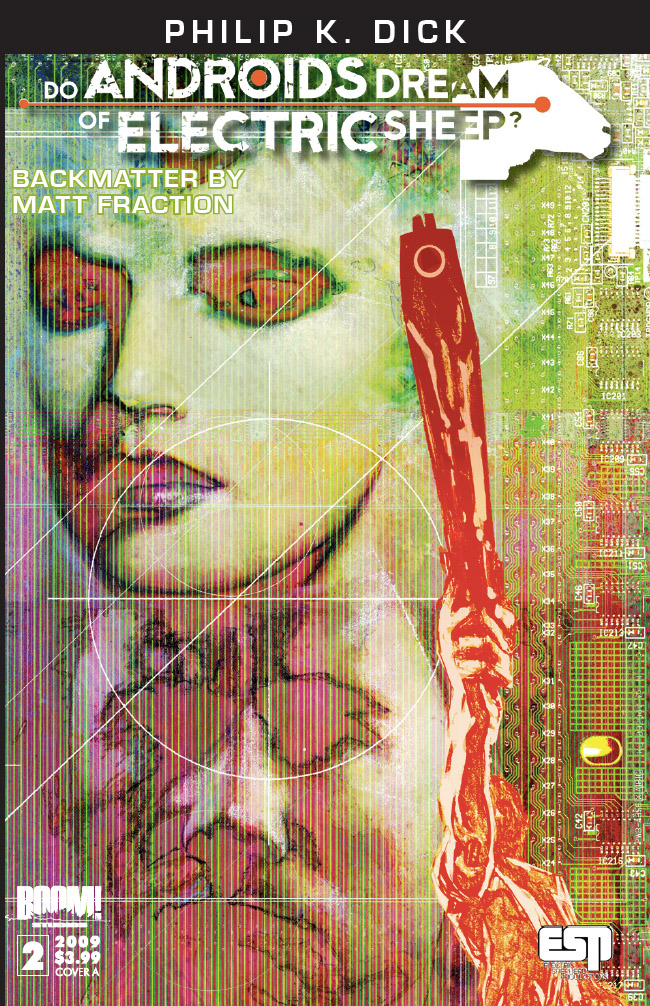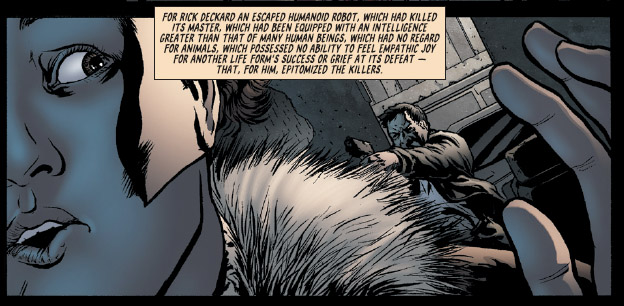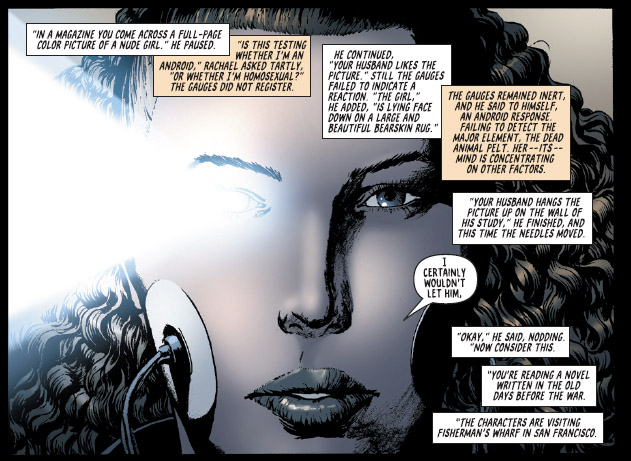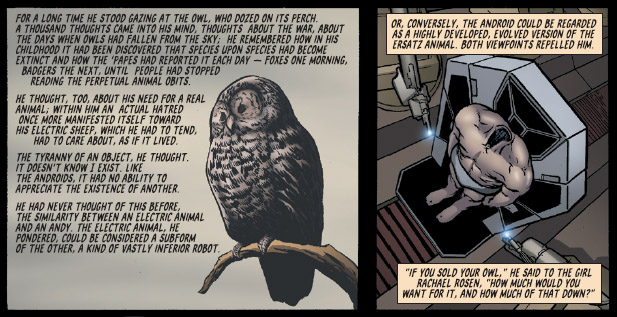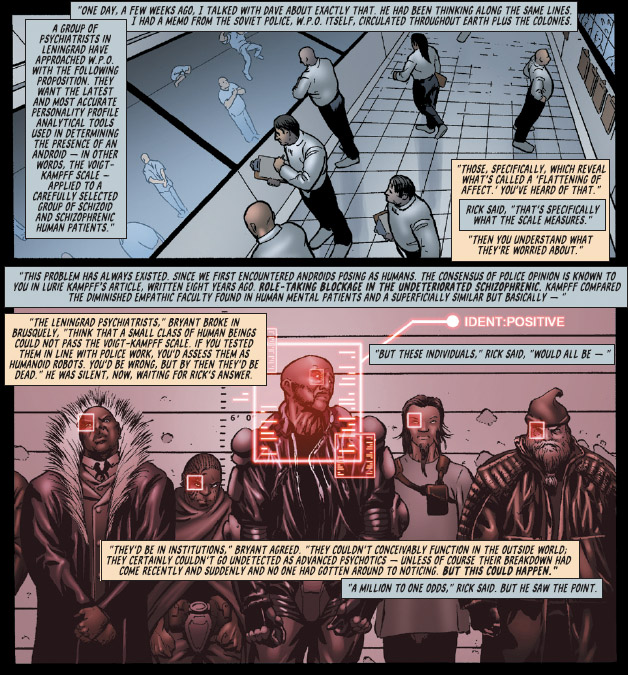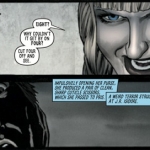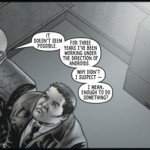REVIEW: Do Androids Dream of Electric Sheep? #2
Release Date: 5 August 2009
Writer(s): Philip K. Dick
Artist(s): Tony Parker
Cover(s): Bill Sienkiewicz, Moritat, Scott Keating
Colours: Blond
Letterer: Richard Starkings and COMICRAFT’S Jimmy Betancourt
Backmatter: Matt Fraction
Publisher: BOOM! Studios
In this issue, Deckard gets assigned the job of “retiring” six andys after the lead bounty hunter took out two and was gunned down by one. Deckard is eager to take on the extra work for the money it will get him (he really wants to buy a real animal). The only problem is, the test the bounty hunters use to determine androids from humans (the Voight-Kampff) may not be as effective as they initially thought it was.
The part of the story that takes place in this issue may be familiar to you if you’ve seen Bladerunner. Basically, the entire issue is Deckard’s first meeting with Rachel Rosen. Deckard’s boss is worried that the Voight-Kampff test isn’t as foolproof as everyone had been assuming it was. Since this is the only way you can determine on-the-spot if someone is an andy or a human, it not being 100% is a big problem. Usually, when a person fails this test, they are immediately killed (aka “retired”).
The Voight-Kampff test is like an empathic lie detector. The subject is asked a series of emotionally charged questions (most of the ones Deckard asks Rachel in this issue are about animals), and a machine measures the subject’s responses, blushing, and involuntary eye movements. The theory is that, if you’re testing an android, the responses will be slower and lack any empathic qualities (whether in the verbal response or bodily response).
Clearly, there is flawed logic here. I don’t care how far into the future you go, there’s always going to be people that just don’t know how to empathize, or care to, for that matter. And this is the problem brought up in this issue. How does Deckard know for certain that everyone who fails the Voight-Kampff is an android? You can test the bone marrow of the suspect, but that’s usually after they’ve failed the test and been killed.
What I was curious about is, how do the mood organs (the machine Deckard and his wife are using at the beginning of the first issue) affect a person’s ability to empathize? If every home has one of these machines, and they use them to “dial” an emotion, how can you still empathize with the pain of another living creature? If you’re dialed into the Happy Place, do you still have the physical responses that are appropriate when asked how you feel about boiling lobsters while they’re still alive or how you’d feel after a man got you pregnant and ran off with your best friend? Also, who’s to say every person will or should have the same reaction to vague, emotional questions?
Obviously, two issues in, I still think the story is fascinating. I had a hard time picking just a few panels to post; there are so many great lines and passages that I wanted to share. Like the previous issue, this one is text heavy. At this point, I don’t know if that’s a good thing or not for a visual medium such as comics. I really was focused on the text the first time I read through this issue, and didn’t really take note of the artwork.
So, on the one hand, I’m back to my original stance on a novel being adapted one-for-one to a comic: Just go buy the original novel because you’ll get the entire story all at once and not have to wait a month (or however long since BOOM!’s schedule is kind of hinky sometimes) for the next bit of story progression. On the other hand, after my second time going through the issue, I had to admit the visual element is solid and goes together with the text nicely. I have to be honest when I say I’m the kind of person who hates waiting when I don’t have to wait. Also, I’m one of the thousands of people who doesn’t have tons of money to spend on nonessentials every month. Buying the novel would be a quicker and cheaper fix than investing in floppies every month, in this case.
That being said, taking this subject matter in small doses, having time to mull over the themes of the work, to discuss it, to look stuff up if you have to does have its advantages over making your way through a novel. One of the biggest plus sides for sticking with the comic adaptation is the backmatter. Without a doubt, reading what other writers have to say about Philip K. Dick and how his work changed them is well worth it.


